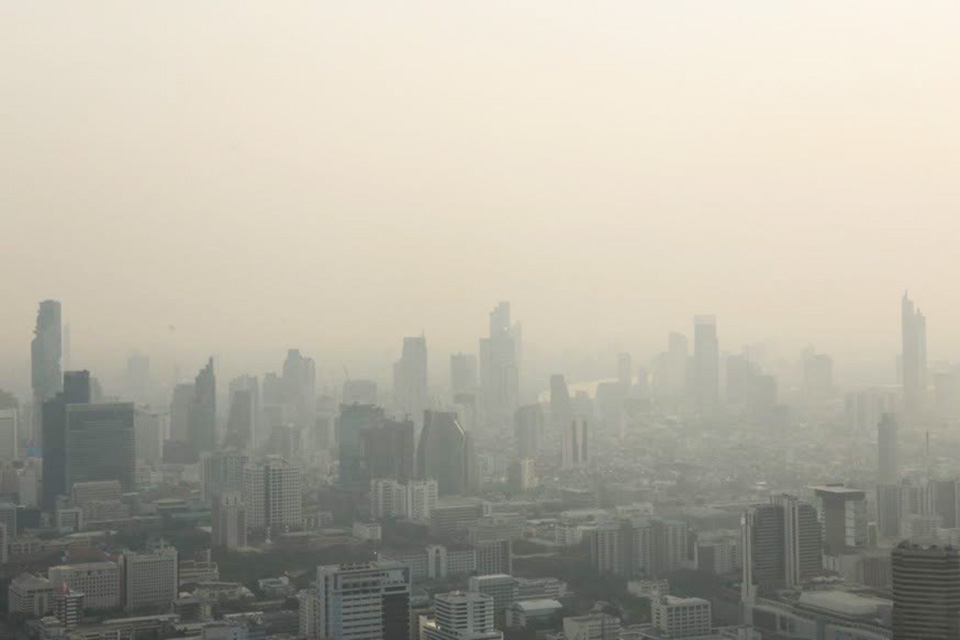
Levels of airborne particulate matter or PM2.5 in Bangkok are still considered to be within Thailand’s safety standard. Aware that the airborne dust issue worsens during the cold season, the Bangkok Metropolitan Administration (BMA) is preparing mitigation measures ahead of the peak dust period. Online communications channels and smart signboards are among the measures that will keep Bangkokians informed when the dust level exceeds the standard.
BMA spokesperson Ekwaranyu Amrapan and advisor to the Bangkok governor Pornphrom Vikitsreth revealed measures being prepared ahead of the imminent surge in PM2.5 levels. According to them, the BMA is monitoring the dust level and already made improvements to channels for warning the public about elevated dust readings. People will be able to receive relevant news and information through the “Line Alert” channel on the Line application. They can also turn to the Air BKK application or the BMA’s Facebook page to receive this information. A warning will be issued whenever the PM2.5 reading in an area exceeds 90 micrograms per cubic meter (red color code). Readings exceeding 75 micrograms per cubic meter in 10-20 Bangkok districts at once will also trigger an alert. PM2.5 levels will also be displayed on 90 smart signboards on roads in 20 districts.
Bangkok City Hall has been inspecting factories and conducting checks on vehicles emitting black exhaust to reduce airborne dust at their sources. Open-air burning was also regulated. To protect people’s health, the BMA has set up “dust-fighting classes” and dust meters at 33 schools in the capital. This initiative will be expanded to more schools in due course. Incident response plans have also been established for times when the dust level exceeds the safety standard, with emphasis on vulnerable individuals and small children. (NNT)
 |
 |
 |





